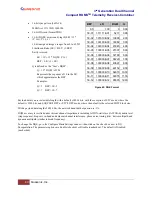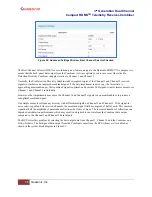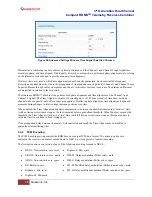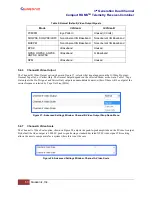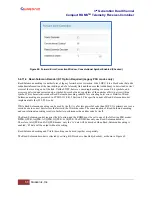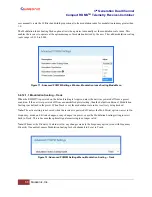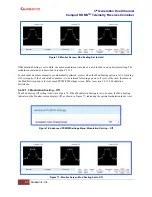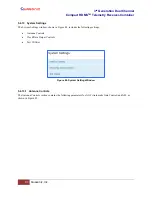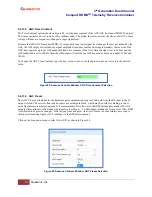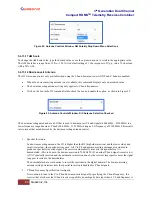
3
rd
Generation Dual Channel
Compact RDMS
TM
Telemetry Receiver-Combiner
54
Quasonix, Inc.
5.4.11.2 Viterbi Decoder (K7 Option Required) (Legacy PSK modes only)
Convolutional encoding is a form of legacy forward error correction. Like LDPC, it adds redundant information at
the transmitting end of a telemetry link and then uses that redundancy to detect and correct errors at the receiving
end of the link. Details of K=7 rate=1/2 convolutional encoding are presented in CCSDS 131.0-B-2 Section 3.
Viterbi decoding is used to decode convolutional-encoded data.
The purpose and benefits of convolutional encoding are similar to LDPC. However, convolutional encoding requires
more bandwidth than all but the lowest-rate LDPC codes, and its error-correcting performance is inferior to LDPC.
Therefore, LDPC is the preferred forward error correction if possible.
The Viterbi Decoder control requires the K7 option, and the RDMS must be set to one of the following PSK modes:
BPSK, QPSK, AQPSK, AUQPSK, OQPSK, or UQPSK.
The Viterbi Decoder can be disabled or enabled by clicking on the check box in the Forward Error Correction
window, shown in Figure 65.
Figure 65: Forward Error Correction Window
5.4.11.3 Convolutional Symbol
The Space Network Users’ Guide (NASA 450-SNUG) defines two different methods for generating quadrature
symbols (variants of QPSK) when using convolutional encoding.
The first method is for I and Q data streams to be independently encoded. In this method, two convolutional
encoders are used, one for I data and one for Q data, as shown in Figure 66.

